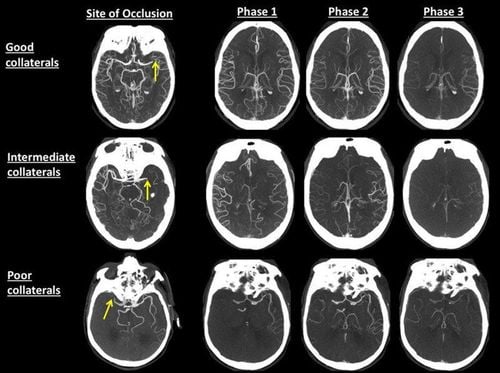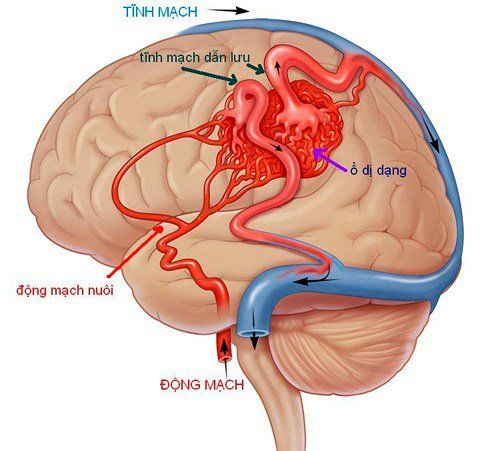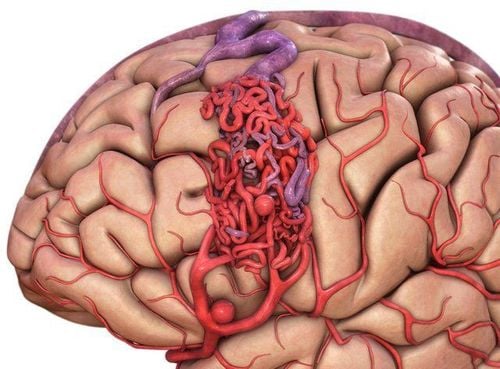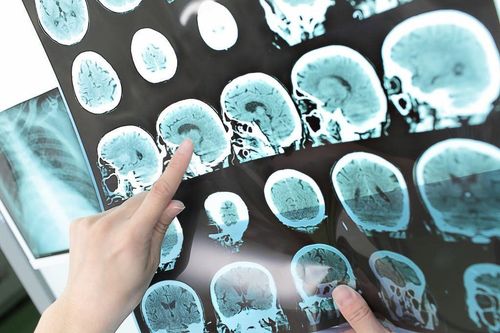This is an automatically translated article.
This article is expertly consulted by Master, Doctor Bui Ngoc Phuong Hoa - General Internal Medicine - Department of Medical Examination & Internal Medicine - Vinmec Danang International General Hospital. The doctor has more than 24 years of experience in the field of Psychiatry.Cerebral vascular malformation is a very dangerous disease if not detected in time. Today, the proportion of patients diagnosed with cerebrovascular malformations has increased dramatically thanks to advances in noninvasive imaging techniques.
1. What is cerebrovascular malformation?
Cerebrovascular malformation is an abnormal connection between arteries and veins in the body. The arteries are responsible for transporting oxygen-rich blood from the heart to the brain. Veins carry hypoxic blood back to the lungs and heart. When the cerebral arterioles are malformed, this important process is disrupted.2. Is cerebrovascular malformation dangerous?
Cerebral vascular malformations are very dangerous and occur in 1% of the general population. When there is a cerebrovascular malformation, the patient will experience bleeding in the brain and cause the malformed arteries and veins to become thin or weak and can lead to the rupture of the malformed cerebral blood vessel and bleeding into the brain.Cerebrovascular malformations account for about 2% of all hemorrhagic strokes each year and are often the cause of cerebral hemorrhage in children and young adults.
Cerebrovascular malformation will also reduce oxygen to brain tissue. With cerebrovascular malformations, blood bypasses the capillary network and flows directly from the artery to the vein. Blood flows quickly through the blood vessels because it is not slowed down by the capillaries, resulting in the surrounding brain tissue being unable to easily absorb oxygen from the blood due to the rapid flow. Without enough oxygen, brain tissues weaken or may die completely. This leads to stroke-like symptoms, such as difficulty speaking, weakness, numbness, decreased vision. This malformation also causes the blood vessel to thin or weaken, creating an aneurysm, which can enlarge and easily rupture.
Due to the abnormal connection between the artery and the vein, the blood flows through the malformed blood vessel with high pressure and fast. Cerebral vascular malformation causes many problems, the most common of which is a rupture of a blood vessel leading to a stroke due to cerebral hemorrhage or pressure on the brain that causes convulsions and seizures.
Cerebral vascular malformation causes many problems, the most common of which is a ruptured blood vessel leading to a hemorrhagic stroke
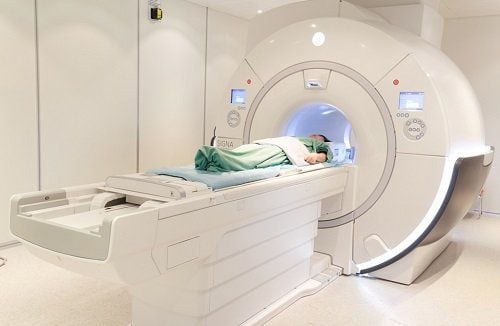
3. Methods of diagnosing cerebrovascular malformations
Cerebral angiogram: A small tube is inserted into an artery in the groin. This thin tube is threaded up the blood vessels from the groin toward the brain. Contrast is injected into the cerebral vessels and the image of the cerebrovascular malformation appears as a vascular plexus. Doctors can see the exact location and size of this deformity. This is considered the most accurate test.Computerized tomography (CT scan): Uses X-rays to take pictures of different parts of the body. A CT scan is a good way to detect bleeding in the brain or areas of fluid around the brain. This brain scan can be done with or without contrast. A CT scan can show a cerebral vascular malformation, especially after X-ray contrast is introduced.
Magnetic resonance imaging (MRI): This is a method of creating highly detailed images of the body without taking X-rays. MR angiography uses specially designed “pulse sequences” to show the arteries and veins of the brain as well as cerebrovascular malformations.
Neurology - Department of Examination and Internal Medicine - Vinmec International General Hospital is the address for treating cerebrovascular malformations with many outstanding advantages such as: There are many different specialties, a team of doctors rich experience in specialized fields, modern equipment system..
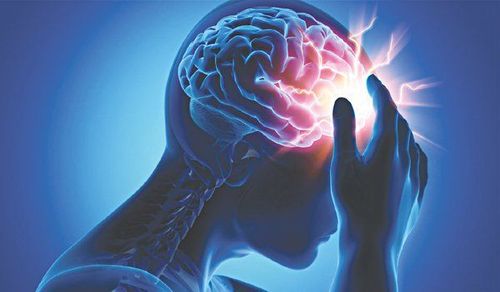
Please dial HOTLINE for more information or register for an appointment HERE. Download MyVinmec app to make appointments faster and to manage your bookings easily.





